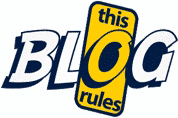Some of the most iconic and timeless pieces of literature were aimed at children. In fact, The Little Prince happens to be the third best-selling book of all time, having sold over 100 million copies worldwide, despite the fact that it was in French. It’s a good thing that language barriers can’t keep the message of a good story from getting across to the audience.
We have to ask – is reading as much of a dying breed as it’s made out to be? Surely there are plenty of people who consider that the little ones born and raised during the technological boom of the 2010’s have no interest in this activity. You look left and right and undoubtedly notice at least one child who is thoroughly absorbed in some application on a smartphone. But that doesn’t mean they can’t read, let alone that they’re not interested in it. Children are interested in anything that helps polish their imagination and creativity, so chances are that they’ll fall in love with any of the many stories for kids that you’d put in their hands.
So, knowing that, where do we begin? The children stories market is in a competition just like any other market, so there are definitely some ups and downs. Below, you’ll find a small list of recommendations on stories for kids that are objectively (and even a little bit subjectively) considered to be the best of the best.
P.S. It’s also filtered by age categories.

Maurice Sendak, “Where the Wild Things Are”
A story with only 40 pages, Where the Wild Things Are managed to leave its mark on literature. The plot depicts a young boy named Max, who enjoys dressing up as a wolf and wreaking havoc around his household. After he is sent to bed without supper, he realizes that his bedroom as turned into a strange jungle inhabited by bizarre animals and monsters called “Wild Things.” After scaring every being on the island with the costume, he is crowned as the king of Wild Things. However, his adventure is cut short when he returns home, where he finds a warm meal waiting for him.
The story is blunt and straight to the point, having at core a moral lesson that can be easily grasped and understood by children of the age range it’s marketed for. The success of this short story spawned an opera adaptation and a movie version, released in 2009.

A.A. Milne, “The Complete Tales of Winnie the Pooh”
The little golden pooh who feels very strongly about honey is one of the most memorable characters to come from a children’s book. Winnie-the-Pooh is the first of Milne’s collection of stories which depict the whereabouts and adventures of Winnie the Pooh and his likewise iconic friends. The book mentioned here is a glossary which contains essentially all of them. Since the publishing of the first story, there have been spawned numerous adaptations, including a popular cartoon series.
Pooh’s success comes from the simplicity of the plot and setting. Children love animals and, if they loved the storybook, then they’ll definitely love the concept of imagining themselves as the boy present in the cartoons. There is something about being surrounded by friendly, colorful, talking animals that is guaranteed to make any child happy.

Dr. Seuss, “The Cat in the Hat”
Dr. Seuss conveyed one of the biggest dreams of any children – a magical appearance from an equally magic entity that will take them on an adventure of fun and laughs. The memorably looking Cat shows up at the house of Sally and her unnamed brother, determined to entertain them while they’re home alone and stuck inside because of rain downpours. After wrecking the whole house, he conceives a machine that miraculously puts everything back in place before he takes his leave.
The plot is as simple as it gets and, in a way, it essentially explains why children are so fascinated by tricks and magic shows. In a sense, they may be seeing a little bit of the Cat in every performer, even if they haven’t read the story yet.

The Brothers Grimm, “Grimm’s Fairy Tales”
Yet another example of a collection of multiple stories rather than a standalone one, the fairytales crafted by the Grimm brothers are as timeless as they are iconic. Extremely varied and imaginative, this amassing of stories contains famous titles of the likes of Rapunzel, Hansel and Gretel, Little Red Riding Hood, or Briar Rose. All of these stories, even separately, are definitely topping the list of fairytales every child should know.
The elevated age range comes from the considerably more subtle morality of the stories, as well as the inclusion a certain graphicness. We all know how the woodchopper cuts the Big Bad Wolf in two to free Little Red and her grandmother and, generally, the presence of evil is much more accentuated.








